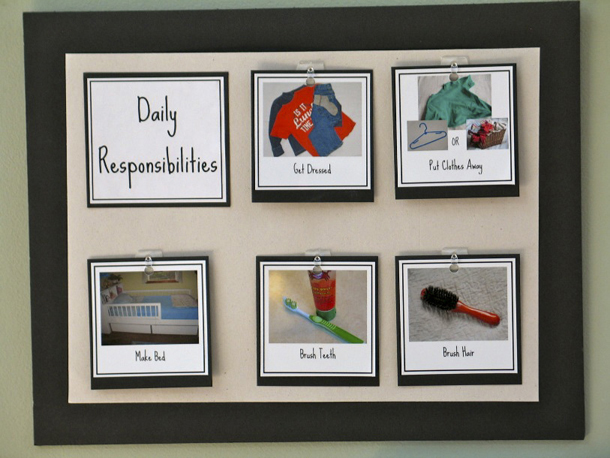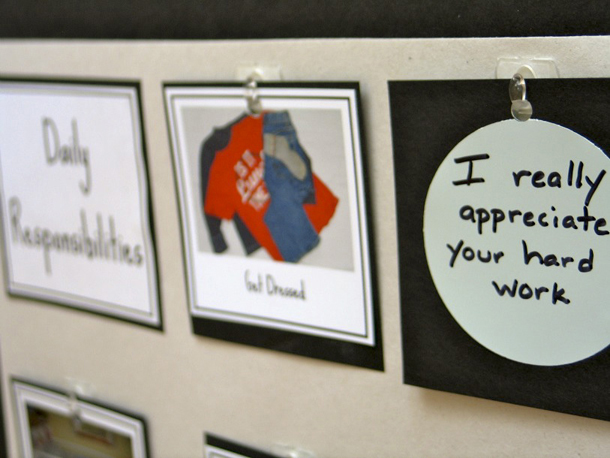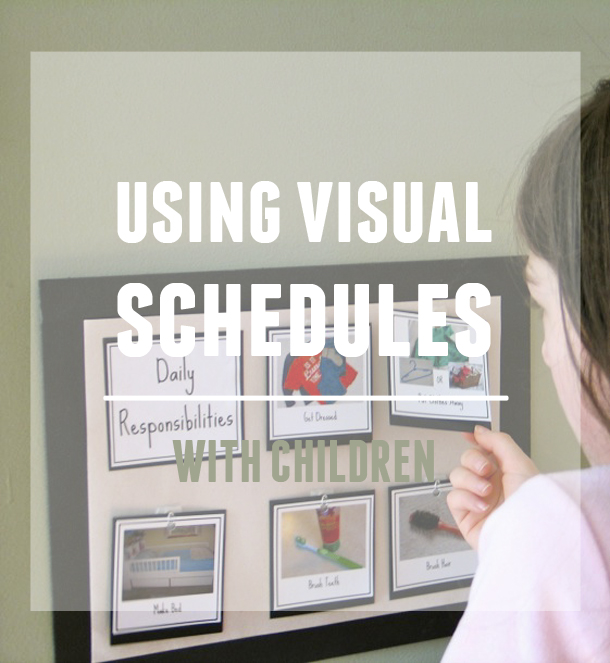Using Visual Schedules with Children
Today Monique Barker is with us to share a simple way that we can offer predictability, teach responsibility, and help our children feel a sense of accomplishment on a daily basis…
It’s easy in today’s world to get distracted, overwhelmed, and feel like there’s just not enough time. It can be hard to stay focused on our daily goals. Our days go much more smoothly when our plans and expectations are clearly laid out and it’s rewarding to look back at what we were able to accomplish. It’s really no different for children.
When I taught in a preschool environment, I learned the many benefits of using a visual schedule to communicate the daily activities. It aided in the comprehension of our routine, decreased any anxiety the children may have had about what was to come, and established clear expectations.
When I had children of my own, I began using visual schedules at home. Over the years I have created different schedules for various reasons and have always found them effective. So what exactly is a visual schedule and what does one look like?
 A visual schedule is a symbol or picture representation of a series of activities. It can be used to communicate the overall flow of the day or to break a task into more manageable parts. The photo above is of daily responsibilities that my children have and are expected to accomplish independently. It is displayed in a highly visible spot where my children see it as they come down the stairs first thing in the morning. To signify that they have complete a task, they turn the card over where they will find a hand written note of appreciation from me.
A visual schedule is a symbol or picture representation of a series of activities. It can be used to communicate the overall flow of the day or to break a task into more manageable parts. The photo above is of daily responsibilities that my children have and are expected to accomplish independently. It is displayed in a highly visible spot where my children see it as they come down the stairs first thing in the morning. To signify that they have complete a task, they turn the card over where they will find a hand written note of appreciation from me.
 We also have a simple visual schedule that is used for our home-education activities. We review the schedule each morning during our morning meeting as the activities differ slightly each day. My children can clearly see the expectations for the day and it also helps keep me on track.
We also have a simple visual schedule that is used for our home-education activities. We review the schedule each morning during our morning meeting as the activities differ slightly each day. My children can clearly see the expectations for the day and it also helps keep me on track.
Using a visual schedule with children can help:
- Establish routines and expectations
- Break the day or an activity into manageable parts
- Provide support with transitioning from one activity to another, especially when it is something out of the normal routine
- Minimize resistance to less-preferred activities
- Foster self-confidence and responsibility
- Support independence
Visual schedules can also be used with very young children and children not yet reading and may help reinforce language development and emerging reading skills.
If you would like to use a visual schedule with your children, here are a few pointers:
- Experiment with different methods to see what works best for you and your children
- Keep it simple and concise
- Involve your children in the planning of the schedule
- Display it in a highly visible location that is easily accessible to you and your children
- Be consistent. Always use the same picture and label for a specific activity
- Have a way to signify the end of an activity or completion of a task, like turning the picture over or removing it and putting it in an “all done” pocket
- Keep it fun!
You might be amazed at how a simple thing can significantly improve the flow of your day!
More examples of visual schedules…
- Creating a Visual Schedule for Kids by Simple Home School
- Morning and After-School Routines by g*rated
- Chore Charts by Home School Harmony
- Chore Chart Tutorial by My Name is Snickerdoodle
- Chore Chart Printable by Over The Big Moon
- Morning and Bedtime Routine printables by I Heart Organizin

